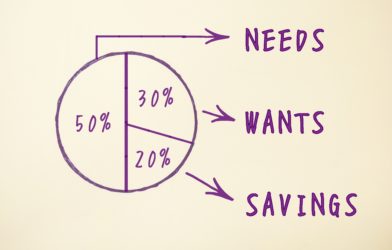Wouldn’t it be great if your boring old grocery and gas spending could help you pay for that tropical vacation you’re dreaming about? If you’re doing most of your spending on credit cards, you might as well get some rewards back while you’re at it. However, knowing which credit card is best for you in 2022 can be challenging with the ever-changing credit card landscape.
Every day, a new credit card offer seems to come out, and it’s hard to keep track of all the advantages and disadvantages of different cards. Dive into this simple breakdown of the five best credit cards for 2022.
Different Types of Credit Cards
0% APR credit cards
A 0% intro APR credit card has no interest, usually for a set number of months, and can be an excellent option if you carry a balance on your credit card from month to month. You’ll save on interest charges by transferring your balances to a 0% APR credit card, but you may have to pay a balance transfer fee.
Rewards credit cards
A rewards credit card can work with various rewards programs, such as hotels and airlines, or offer cash back on popular spending categories like groceries and gas. Rewards credit cards let you earn cash back or rewards points on everyday purchases.
Credit-building credit cards
Credit-building credit cards are designed for people with bad credit or no credit. These cards help you build your credit by reporting your payments to the credit bureaus and building a credit history.
Business Credit Cards
Business credit cards are great options for business owners. These cards offer bonus rewards and cash back on business-related expenses such as office supplies, travel, and fuel. However, these cards are not available to the average consumer.
Best credit cards 2022
When looking for the best credit card in 2022, you should consider what type of card works best for your spending habits. The best credit cards combine rich rewards, 0% intro APR, substantial welcome bonuses, and practical terms and conditions.
Cash back cards
Blue Cash Preferred Card from American Express
The Blue Cash Preferred card from American Express is an excellent choice for families with its streaming, groceries, and transportation rewards. It lets you earn cash back and has no annual fee for the first year.
Pros:
The Blue Cash Preferred card from American Express lets you earn 6% cashback on up to $6,000 in grocery store and streaming services purchases per year, 3% cash back at U.S. gas stations, and 1% cash back on everything else. If you spend $3,000 on purchases in the first 6 months from account opening, you’ll earn $300 in cash back.
Cons:
The Blue Cash Preferred card from American Express has a $95 annual fee after the first year. There are also spending caps on bonus rewards.
Discover It Student Cash Back
The Discover It Student Cash Back credit card is a great alternative to a secured credit card for students with little to no credit history.
Pros:
The Discover It Student Cash Back credit card has no annual fee and it gives up to 5% cash back on spending in various categories. Plus, they will double the amount of cash back you earn in your first year.
Cons:
One disadvantage of the Discover It Student Cash Back credit card is that the 5% bonus cash back rate is capped to $1,500 in purchases per quarter. Additionally, depending on your credit score, you may only be eligible for a small credit limit at first. Also, there is also no welcome bonus for spending a certain amount in the first few months you have the card open.
Travel credit cards
Chase Sapphire Preferred Card
The Chase Sapphire Preferred card is a popular reward credit card for frequent travelers, since it offers excellent redemption offers for travel purchased through the Chase Ultimate Rewards portal. Additionally, if you spend $4,000 in the first 3 months from account opening, you’ll earn 60,000 Chase Ultimate Rewards points.
Pros:
With the Chase Sapphire Preferred card offers, you’ll earn 5x points on travel purchases and 1x on all other everyday purchases. When you redeem Chase Ultimate Rewards points through the portal, your points are worth 25% more.
Cons:
The Chase Sapphire Preferred card has a $95 annual fee. You will also need a good or excellent credit score to be approved for this card.
Capital One Venture X
The Capital One Venture X is a great rewards credit card, though it does feature a hefty annual fee of $395.
Pros:
With the Capital One Venture X, earn 10 miles per dollar on hotels and rental cars, 5 miles per dollar on flights, and 2 miles per dollar spent on all other purchases. You can also get 75,000 bonus miles during the first three months after account opening when you spend $4,000. Plus, it has no foreign transaction fees.
Cons:
In order to earn 5x and 10x miles on travel purchases with the Capital One Venture X rewards credit card, you must purchase your flights, hotels, or rental cars through Capital One Travel.
Platinum Card from American Express
The Platinum Card from American Express is designed for frequent travelers who want to take advantage of the Platinum Concierge service and a wide range of premium travel features.
Pros:
The Platinum Card from American Express’ travel perks includes 5x points on booked airfare with airlines or through American Express Travel. You can also earn a $200 hotel credit and a $200 airline fee credit for qualifying purchases.
The Platinum card also offers airline lounge and dining access worldwide, plus nearly $1,500 in credits for spending on various services including Uber and Netflix. By spending $6,000 within the first 6 months from account opening, you can earn 100,000 Membership Rewards points.
Cons:
The Platinum Card from American Express has a high annual fee of $695, though you may be able to offset the fee with the various credits offered.
FAQs
How many credit cards should you have?
You should have at least two credit cards, one for everyday purchases and one for emergencies. If you’re a big spender, consider adding a third card offering rewards or cash back on your spending. The typical American has around four credit cards in their wallet.
Are annual fees worth it?
Annual fees may be worth it if the card offers rewards or cash back that outweigh the cost of the annual fee. However, avoid cards with annual fees if you’re a light spender and won’t be able to spend enough to take advantage of the card’s benefits.
What’s the best card for everyday purchases?
The Blue Cash Preferred card from American Express is the best card for everyday purchases, offering 6% cash back on grocery stores, 3% back at gas stations, and 1% on all other purchases. Another excellent card for everyday purchases is the Citi Double Cash Card, which offers 2% cash back on all purchases and has no annual fee.
How to apply for a credit card?
You can apply for a credit card by going to the issuer’s website and filling out an application with your personal information including your income. Then the bank will do a credit check to make sure your credit score is high enough to be approved for the credit card. Your credit score can affect your interest rate, your credit limit, and whether you are approved at all.
What is a credit score?
Your credit score is a number that represents your creditworthiness, or how likely you are to repay a loan. A credit score is all about your financial history, and factors in the timeliness of your payments, how long your credit history is, what percentage of your available credit you are using, among other factors.
The average American credit score is 698 in a range from 300 to 850. A higher credit score is better when it comes to being approved and getting favorable credit card terms.
Final Thoughts
The best credit cards in 2022 are those that offer cash back, rewards points, or travel rewards. Pick the best card for you by looking at the things you normally spend money on and see which card offers the best benefits for those categories.
No matter which card you choose, be sure to read the fine print and understand the terms and conditions to get the most out of your card. And it’s always a good idea to pay your balances in full each month to maintain a good credit score.












